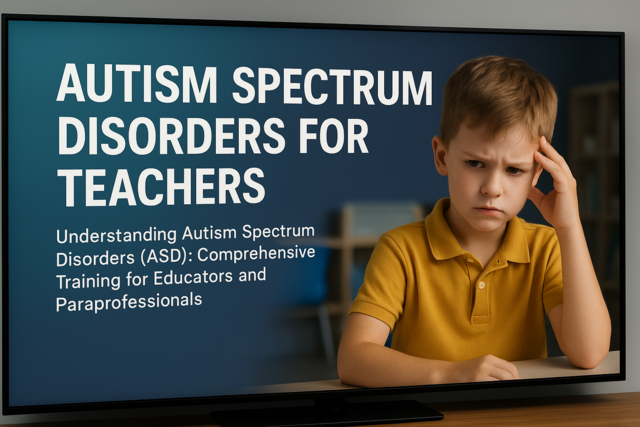Unit Studies 101
Dive Deep, Learn Broadly: Transform Education with Unit Studies

4 Hours average completion time
0.4 CEUs
11 Lessons
11 Exams & Assignments
83 Discussions
11 Videos
12 Reference Files
127 Articles
Mobile Friendly
Last Updated December 2025
Mastering the Art of Unit Studies: An Engaging Two-Part Journey
Are you passionate about crafting enriching learning experiences for your students? Whether you're a homeschooling parent or an innovative educator, the technique of creating unit studies is a powerful tool to engage young minds deeply and meaningfully. Our two-part course provides an extensive guide on how to master this dynamic teaching approach, with an exciting deep dive into baseball as a captivating subject.
Understanding the Unit Study Approach:
Unit studies, at their core, are cross-curricular explorations of singular topics, connecting multiple subjects around one central theme. This holistic approach ensures learning is contextual, relevant, and deeply engaging. For instance, a topic like "Rainforests" could encompass biology, geography, conservation ethics, indigenous cultures, and even art.
Part 1: Crafting Comprehensive Unit Studies
This segment delves into the nuts and bolts of creating a unit study:
- Lesson 1: Grasp the foundational techniques to formulate impactful unit studies, ensuring that each lesson is engaging and effective.
- Lesson 2: Understand the nuances of tailoring unit studies to cater to individual learner's interests and academic needs. For instance, if a student is fascinated by ancient Egypt, how can we turn this passion into an expansive learning experience?
- Lesson 3: Delve into aligning your central topic with various academic disciplines, ensuring a comprehensive educational experience.
- Lesson 4: With the vast expanse of resources available, both online and offline, this lesson guides you in curating and compiling the most effective materials for your chosen topic.
Part 2: A Home Run with Baseball:
Using the foundational knowledge from Part 1, we dive into the world of baseball as our chosen topic. But why baseball? This sport, beyond its obvious athletic components, has been deeply intertwined with American history, society, and culture.
- Lesson 5: Understand the broader connections of baseball, from its roots to its significance in modern culture.
- Lesson 6: Explore the artistry within baseball, from stadium designs to iconic sports photography and memorabilia.
- Lesson 7: Dive into the science behind baseball - the physics of a curveball or the biology of a player's reflexes.
- Lesson 8: Appreciate the music inspired by the sport, from classic anthems to contemporary hits that capture the essence of the game.
- Lesson 9: Decode the mathematics behind baseball stats, understanding averages, projections, and more.
- Lesson 10: Engage with baseball in literature, exploring memoirs of legendary players or fiction inspired by poignant moments on the field.
Concluding our course, Lesson 11 is all about cementing knowledge through real-world experiences. Field trips provide hands-on learning opportunities, making abstract concepts tangible. Whether it's a visit to a historic baseball stadium or a meeting with a local player, the world becomes a vibrant classroom.
Why Choose This Course?
Educational trends, as per recent statistics, show a rising preference for holistic, interest-driven learning approaches. Unit studies perfectly fit this mold, making learning memorable and impactful. By the end of our course, not only will you be equipped to craft your own unit studies on diverse topics, but you'll also have a meticulously detailed blueprint on baseball as an interdisciplinary subject.
Enroll now and transform your teaching approach, making every lesson a grand slam!
- Foster innovative educational approaches
- Integrate cross-curricular teaching strategies
- Develop interdisciplinary educational skills
- Tailor learning to student interests
- Analyze complex cultural and historical contexts
- Enhance curriculum with creative methods
- Connect learning with real-world experiences
- Harness diverse educational resources
-

Learning Disabilities
-

Applied Behavior Analysis Strategies for Teachers
-

Autism Spectrum Disorders for Teachers
-

Emotional and Behavioral Disorders
-

Basic Research Skills
-

Understanding Childhood Obesity
-

Watercolor Painting
-

First Grade Curriculum
-

Basic English Speaking Skills
-

How to Teach Reading Fundamentals
-

How to Write a Short Story
-

Understanding Learning Styles
-

Attention Deficit Disorders: ADD and ADHD
-

Personality Development
-

Early Childhood Development
-

Introduction to Special Education
-

Professional Babysitting Skills
-

Basic Parenting Skills
-

Positive Parenting Techniques
-

The Science and Art of Reading Development
-

Wildlife Rehabilitation: An Introduction
-

Second Grade Curriculum
-

How To Be a Substitute Teacher
-

Empowerment for Single Parents
-

Autism 101